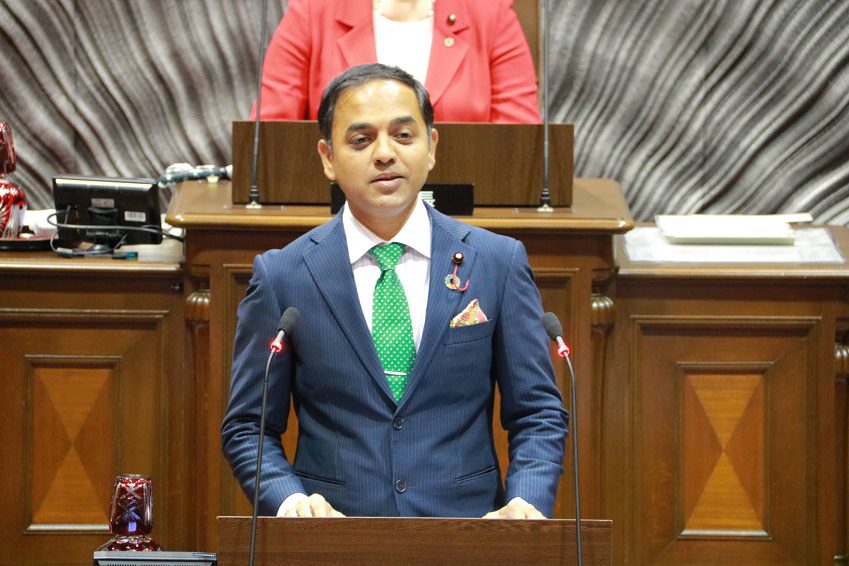(November 15, 2021) Australia has an impressive 700,000 strong Indian diaspora, making it the second-highest taxpaying diaspora after the British. As the group makes significant contributions to Australia’s economy, more and more Indian-origin Australians are coming to the fore. And one such Indian-Australian, who has been making a significant difference through his work, is Devanand Noel Sharm, or Dave Sharma as he’s better known. The 45-year-old became the first person of Indian origin to become a Member of the Australian Parliament in 2019 and has since been representing the New South Wales seat of Wentworth.
A member of the Liberal Party, Sharma was elected to the House of Representatives in the 2019 federal election. Prior to that, he was head of the International Division of the Department of the Prime Minister and Cabinet. At age 37, this Global Indian was appointed as Ambassador to Israel, making him one of Australia’s youngest ambassadors and the second Australian ambassador of Indian heritage.
Great to be out and about this morning in Rose Bay, talking to locals and supporting our Woollahra Liberal councillors — who do a great job for our community! pic.twitter.com/H4QlsznaXW
— Dave Sharma (@DaveSharma) November 13, 2021
His Indian connect
Born in Vancouver, Canada in 1975 to an Indian father and Australian mother, Sharma has two sisters. His parents had met in London in the 1960s and the family eventually moved to Sydney in 1979. Sharma led a rather happy childhood until the untimely demise of his mother due to breast cancer when he was only 12. From then on, Sharma and his sisters were raised by their father and according to him, though it wasn’t always easy, they got through it together as a family. These tough times also taught him the importance of family and the value of hard work and self-reliance.
Sharma studied at the Turramurra High School in Sydney and received the highest possible Tertiary Entrance Rank of 100. In 1994, he went to Cambridge University to do his graduation in Arts: while he initially studied natural sciences, in 1995 he decided to transfer to law and eventually graduated in law with first class honours. He then returned to Sydney to study medicine at Sydney Medical School; a year later he began working as a public servant for the Department of Foreign Affairs and Trade (DFAT) and completed his Master’s in International Relations from Deakin University.

Life as a public servant
His work with DFAT sent him all over the world and he served as peacekeeper in Papua New Guinea, coordinated strategic policy in Washington DC, and worked for the then Foreign Minister for a couple of years. It was during the course of his work at DFAT that he met his now wife, Rachel.
By 2013, Sharma was appointed as Australia’s Ambassador to Israel, where he worked for four years working to advance ties in areas such as innovation, technology, counter-terrorism, and peace in the Middle East. Upon his return to Australia in 2017, he ventured into the private sector and began working as an advisor to various companies and businesses within the technology space.

Dave Sharma with his wife Rachel and their three daughters
Entry into politics
By 2018 though, the then Australian Prime Minister Malcolm Turnbull had resigned and Sharma was selected as the Liberal Party candidate for the Wentworth by-election. Though independent candidate Kerryn Phelps won the by-election, Sharma was pre-selected once again to represent the Liberal Party in Wentworth at the 2019 Australian Federal Election. This time Sharma won the seat from Phelps. After his win he told SBS, “Being the first Indian-origin representative in the Australian Parliament is a great honour and a privilege. It feels satisfying to contribute to the Coalition victory against the odds and against expectations. I feel very satisfied to have won the seat back, having been the person who lost it just six months ago.”
Through his years in office, Sharma has been focusing on areas like national security, strength of the economy, and unity between communities. He also said that he believed in man-made climate change and that renewable sources of energy will have to play a major role in any energy plan.
Though relatively new to politics, Sharma had also said after his win that he would be happy to contribute in matters of foreign affairs. “With my background in foreign affairs and national security and my own Indian ancestry, I hope to make a contribution in those areas and in particular work to strengthen and nourish the relationship with India,” he said in an interview.
Batting to reverse climate change
In the recent past, he has been focusing his energies on working towards reversing climate change by urging the government to back more ambitious 2035 emissions reduction target. “When it comes to our climate and energy policies, the positions we adopted in 2015 no longer reflect our national circumstances of 2021. To be credible, we need a firm target and accompanying plan to reach net zero emissions by 2050.”
Follow Dave Sharma on Twitter and LinkedIn


